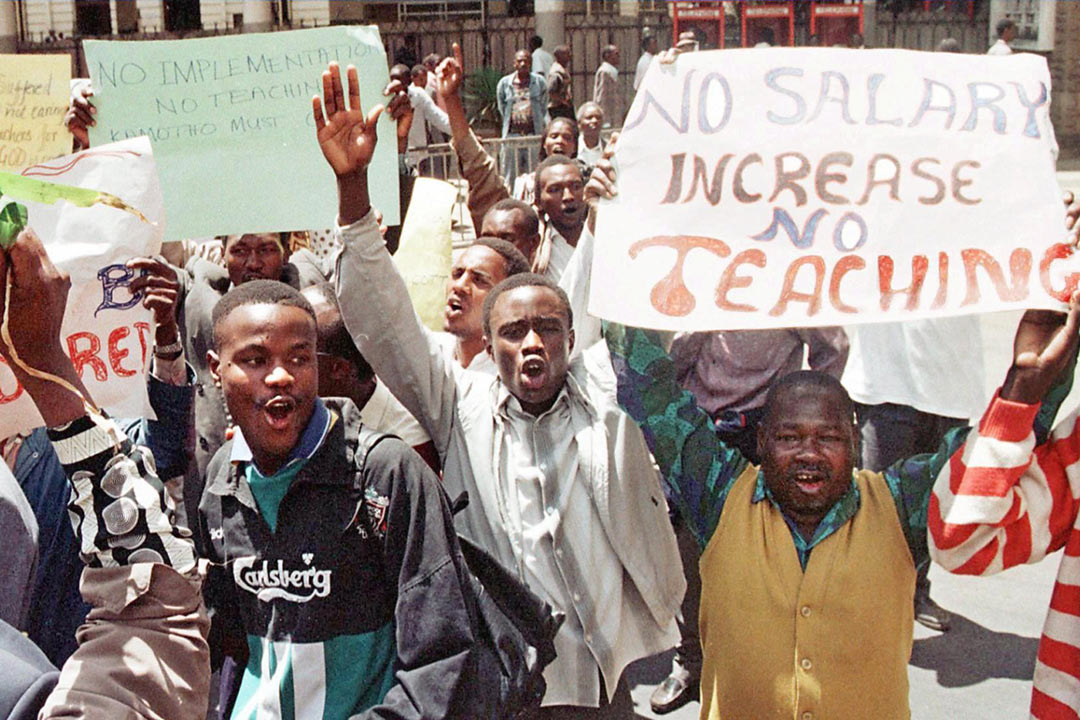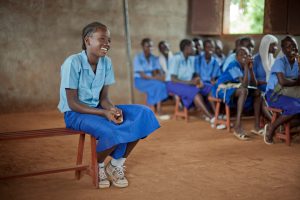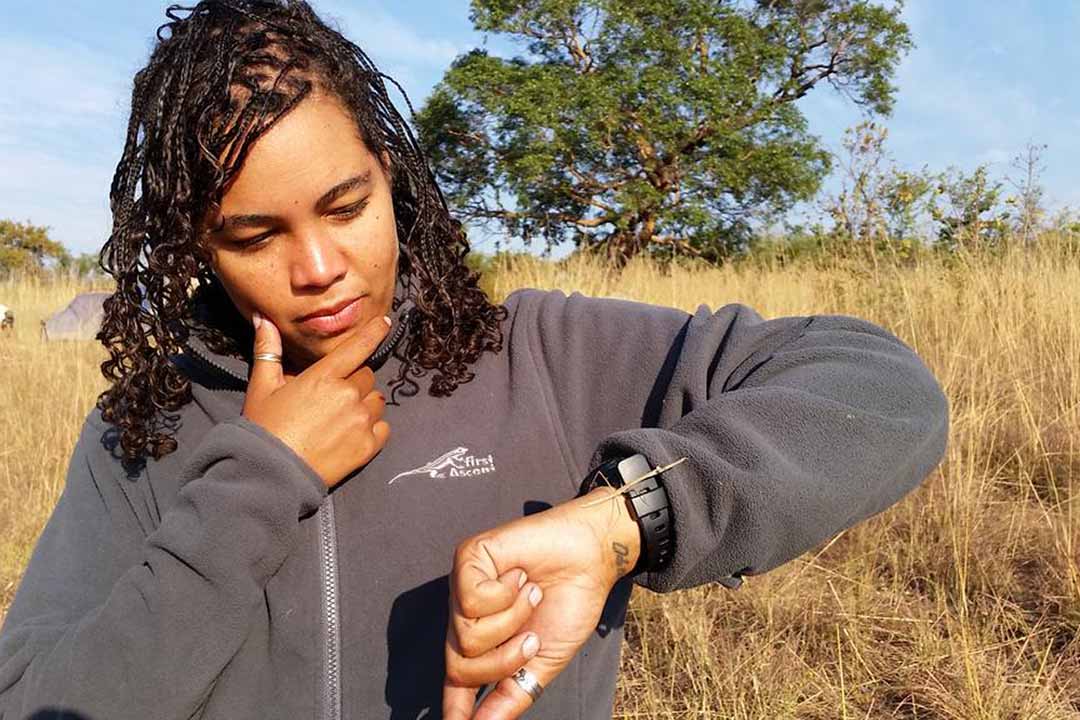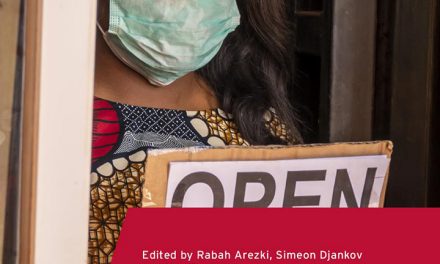The axis between learning and economic development
Africa’s youthful population may have contributed to the continent’s better fortunes with regard to Covid-19 deaths, but the pandemic has also increased the pressure on governments to deliver jobs and basic public and social services, including education. The development and integration of the continent’s potent human capital, especially the youth, should be the driving force behind African policymakers’ engagement with the US.

Two South African anti riot police officers detain a man during a mass protest of the Fees Must Fall movement at the University of Witwatersrand in Johannesburg on October 4, 2016. – South African police fired rubber bullets, stun grenades and teargas at student protesters in Johannesburg as authorities tried to re-open the prestigious Wits University after weeks of demonstrations. The university, along with many campuses across South Africa, has been closed for at least two weeks during protests over tuition fees, with violent clashes regularly erupting between students, police and private security guards. (Photo by MUJAHID SAFODIEN / AFP)
In Africa, the median age is 19 years, compared with 38 in the US and approximately 40 in Europe. According to the Brookings Institute, by 2050, there will be more young people entering the labour force in Africa than the whole world combined. McKinsey, in its Africa at Work report, opined: “Africa’s labour force will grow by 122 million during this decade, and will be the largest in the world by 2035.”
In the Sahel, the US and allies in the region are fighting terrorist groups taking advantage of, among many things, government’s failure to deliver services to marginalised communities and the abundance of unemployed young men who harbour a feeling of powerlessness. Military intervention has proved to be incapable of solving this problem. Worse, according to the 2021 Africa Development Dynamics report, in some parts of Mali, Burkina Faso and Niger, extremist groups are collecting taxes and fees from communities in exchange for provision of security and services. In Senegal, young men have taken to the streets to protest the arrest of an opposition leader whom they believe advocates for them. Some of them have destroyed buildings, homes and businesses, which that they perceive as symbols of the current power structure out of anger for a government that has not looked out for them.
From Tunisia to Uganda, and from Sudan to Guinea, young people have been at the forefront of socio-political protest movements that echo similar demands: jobs! At the same time, thousands of young men – and some women and children – have risked their lives on deadly voyages to Europe in search of a better life.
Recently, riots erupted in South Africa led by students attending one of its best public universities, the University of the Witwatersrand (Wits). The National Students Financial Aid Scheme is currently underfunded and cannot support new students. With police and students clashing, the riots led to the death of a 35-year-old bystander. To put this issue into perspective, in 2021, Wits received 70,000 applications for 5,000 available places, and will educate 35,000 registered students. In 2019, it provided $66 million in financial aid.
According to the Africa Development Dynamics report, the number of African youth with a secondary or tertiary education could reach 233 million by 2040. Active African tech hubs doubled from 314 in 2016 to 643 in 2019. Despite this progress, the same report notes that too few youth benefit from job opportunities in the digital economy. There are several reasons for this: 70% of Africa’s young people (1.4 billion) live in rural areas, where only a quarter of the population have internet access, per a 2019 Gallup study. Opportunities for digital economy jobs are few and disproportionately centred on a handful of large urban centres. For example, Cape Town, Lagos, Johannesburg, Nairobi and Cairo account for almost half of the most dynamic start‑ups on the continent.
As much as 85% of the venture capital funding for Africa’s start‑ups went to only four countries between 2015 and 2019. High-potential entrepreneurs operate in a fragile funding ecosystem, which hinders their ability to scale up or be able to innovate. Only 17% of Africa’s early‑stage entrepreneurs expect to create at least six jobs, the lowest percentage globally. They face hurdles in obtaining loans from local banking systems.
As a result, three quarters of educated young people aged 15-29 end up in the informal economy (85% of employment in Africa is informal) in which only 16% use the internet regularly. Since the formal sector is not creating enough jobs, most entrepreneurial activities are small and informal, and wages are unstable. People are doing the best they can and maybe have gone as far as they can go without a government’s consequential intervention and planning. Unless African governments act, self-employment or informal work will likely remain the mainstay for most of Africa’s youth for a long time to come.

Kenyan teachers march 01 October through the streets of Nairobi. The teachers began a country-wide strike today demanding pay rises for both primary and secondary school teachers. (Photo by ALESSANDRO ABBONIZIO / AFP)
If one is looking for an excellent example of how investment in education transformed a poor country into a wealthy one, one need only look to South Korea. In the 1950s, it was a poor country. However, through visionary leadership and government actions, authorities spent as much as 22% of its budget on education. These investments paid off: today, South Korea has one of the most educated populaces and the 11th largest economy in the world, and currently spends about $20.9 billion on education, about 5% of its budget.
Investment in education can also lead to massive employment, not just in education but in other connected industries such as technology, construction, business services, and hospitality. The US offers the perfect example: New York City is the country’s financial capital and some of its biggest employers are banks. However, the city’s Department of Education is the largest public-sector employer, with 135,000 employees, including 75,000 teachers serving 1.1 million children in 1,722 schools. Several years ago, when tech-based multinational Amazon was looking for new headquarters, it prioritised cities with large university clusters. New York City was one of the top finalists.
A research document titled The economic impact of universities: Evidence from across the globe, by Anna Valero and John van Reenen, states: “We find that a 10% increase in the number of universities in a region is associated with about 0.4% higher GDP per capita.”
The United States offers African countries a perfect illustration of how to drive economic development, through its world-class higher education system. Since 1950, an estimated 1.6 million African students have attended American colleges and universities. In 2019, African students contributed about $1.7 billion to the US economy.
The Trump administration set the direction for international development agency USAID “to end the need for foreign assistance” and mandated that all USAID programmes “support a country’s journey to self-reliance”. This dovetails with many Africans’ desire for an end to aid, and more agency in their own affairs. Furthermore, USAID’s education policy affirms that “quality education is the greatest investment a country can make in its future and its people. It is the enabler for all other development sectors.”
Outlined below are seven fundamental reforms for African governments to implement to accelerate human capital development, which will in turn create millions of jobs, accelerate economic development, and meaningfully reduce poverty. These reforms offer opportunities for partners such as the US to offer support in higher education, private-sector development and technology innovation.

Learners at a school in Bahr el Ghazal, South Sudan. Photo: Laura Pannack / Oxfam
First, Africa’s number one asset is its human capital. Investments in human capital development require governments to have sufficient revenue from tax collection. Every government has three required mandates: collect enough taxes and fees to fund public goods, protect citizens from internal and external threats, and create an enabling environment for prosperity.
According to a 2021 report for the World Bank and UNESCO, two-thirds of poor countries are cutting education budgets due to Covid-19. In 2018-2019, high-income countries spent $8,501 per youth on education compared to $48 per youth in low-income countries. No real impact can be made from a low tax base to fund the education of millions of youth. In addition to being deeply undesirable as a way to fund public good, there is not enough foreign aid to close the gap.
Former Credit Suisse CEO Tidjane Thiam recently said African governments needed to encourage the creation of domestic firms. He went on to say domestic firms signal to the rest of the world that the country is a good place to do business. Diversified economies are the best job creators, with many firms of different sizes and across sectors employing low to highly skilled individuals. All firms create a robust tax base that can be used to pay for public goods like investments in education, health, roads and broadband internet.
Secondly, train teachers for the 21st-century economy to increase the quality of learning and outcomes in elementary and secondary schools. Teachers are the backbone of any effective educational system. Without adequate training, professional development and pay, teachers will not have the motivation or skills to teach. Students will not be adequately prepared. McKinsey commissioned a report about the best school systems around the world, which found that at the core of the most effective schools were well-trained and well-paid teachers.
Third, implement a 21st-century curriculum from primary to university. A 21st-century curriculum filled with local content while keeping an eye on global trends that is rooted in the following principles: technology, liberal arts, science, technology, engineering and science (STEM), research and development (R&D), upgraded learning tools and concepts, a culture of inquiry, teamwork and research, and the development of problem-solvers and leaders.
As the world is scrambling for a Covid-19 vaccine, only 1% of global investment in R&D is spent in Africa, and the continent holds a tiny 0.1% of the world’s patents. Of the medical research that does occur, much of it fails to prioritise diseases or health problems that are most pressing for Africans. Put simply, there are not enough scientists in Africa.
The continent currently has 198 researchers per million people, compared with 428 in Chile and more than 4,000 in the UK and the US. To achieve just the world average for the number of researchers per capita, the continent needs another million new PhDs.
Countries that have invested in STEM have experienced global prominence. Studies estimate that between 50% and 85% of US GDP growth in the past 50 years can be attributed to advancements in science and engineering.
Fourth, infuse technology into every aspect of the education system and close the digital divide. Every public school, from primary to university, should have the most updated computer labs for experimentation and learning, as well as preparation for a more digital future. Studies show that the arrival of high-speed internet in a region leads to a positive increase in the employment rate, regardless of the level of education, and better performance of firms in terms of productivity, sales, market growth and financing. For example, in Kenya, the mobile money revolution, which cut across rural and urban populations, went from employing 307 people in 2007 to more than 240,000 in 2020. It also led to the growth of small to medium enterprises. Technological innovations in rural agriculture can improve yields, linkages between markets, and financial inclusion.
Fifth, require age-appropriate entrepreneurial education for every student. The private sector is the backbone of a thriving economy. Providing entrepreneurial education will motivate those who are inclined to use this education to build companies. To support entrepreneurs, establish an institution such as the US’s Small Business Administration.
Sixth, renovate and expand the physical facilities of all existing public education institutions, from primary to university. It is difficult to learn in classrooms and buildings that are collapsing. Public educational facilities must represent the goals and dreams of a nation. A 21st-century curriculum requires upgraded and functioning physical facilities.
Seventh, initiate public and private vocational and technical education programmes. A country that makes things and grows food that the world wants gets rich: it’s simple. Therefore, establish technical colleges that teach the competencies and skills required for 21stcentury industrialisation and manufacturing. This includes producing more skilled labourers, such as welders, electricians, plumbers, drafters, construction workers and machine operators, as well as teaching digital skills.
Finally, for any intervention in education to be successful, it needs to be coupled with substantial investments in energy, water, healthcare, transportation, and agriculture. Young people are desperate for a government that is committed to undoing a history of economic disinvestment and mismanagement, to restoring democracy, and to the provision of public goods.
All of the above are activities that the US has done relatively well for its domestic population, and it would therefore make a fine partner to Africa as the continent attempts to achieve similar goals.













